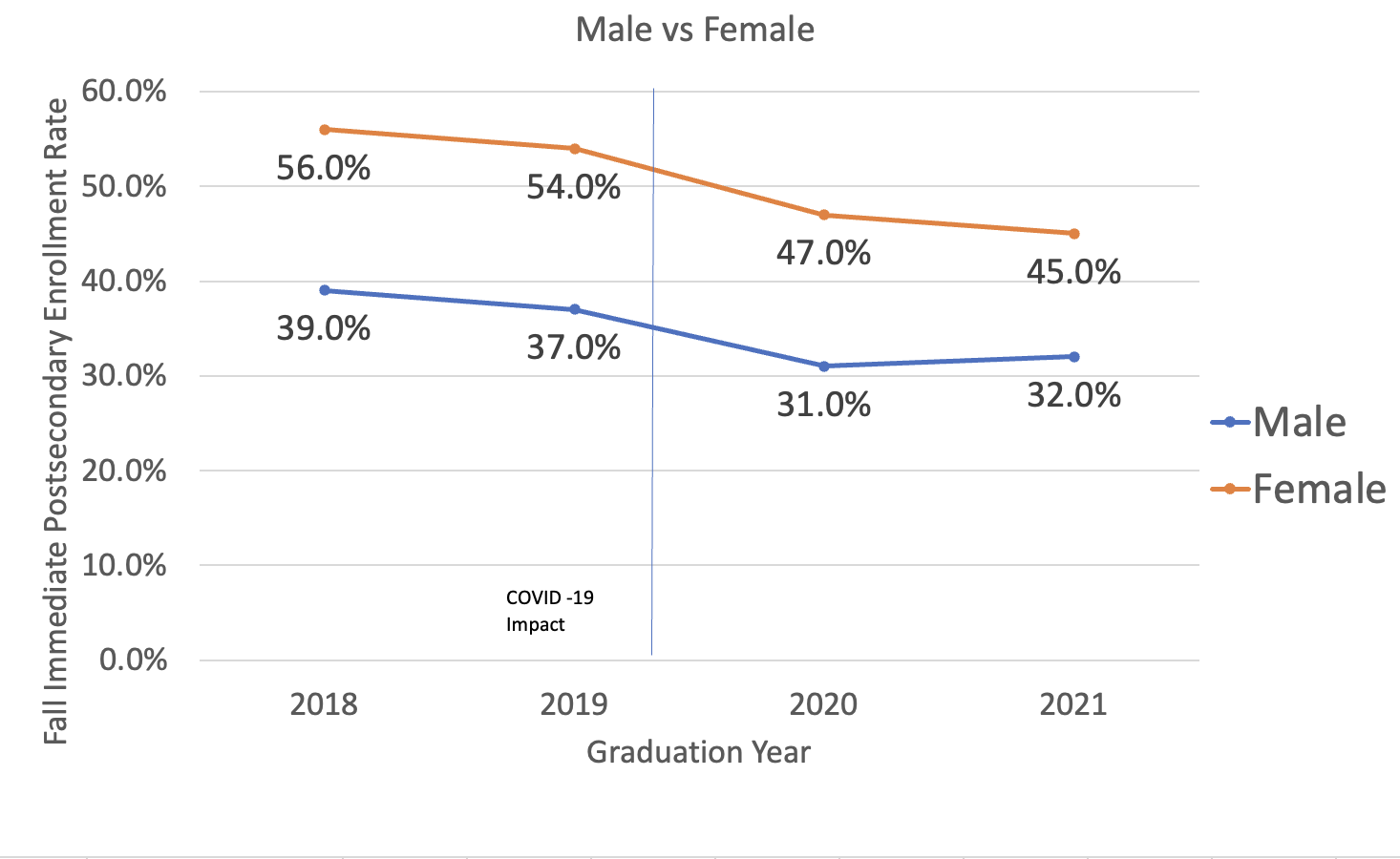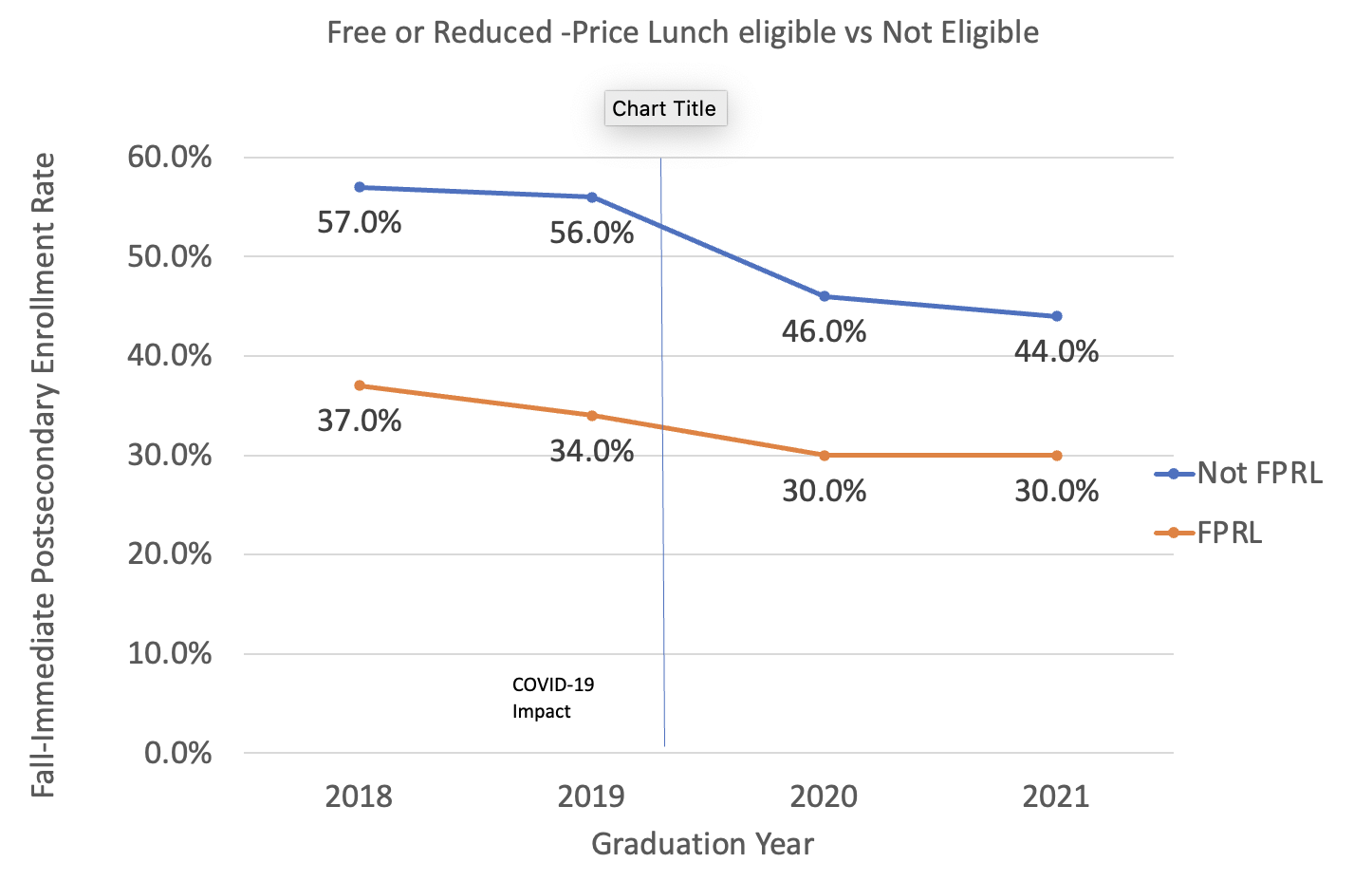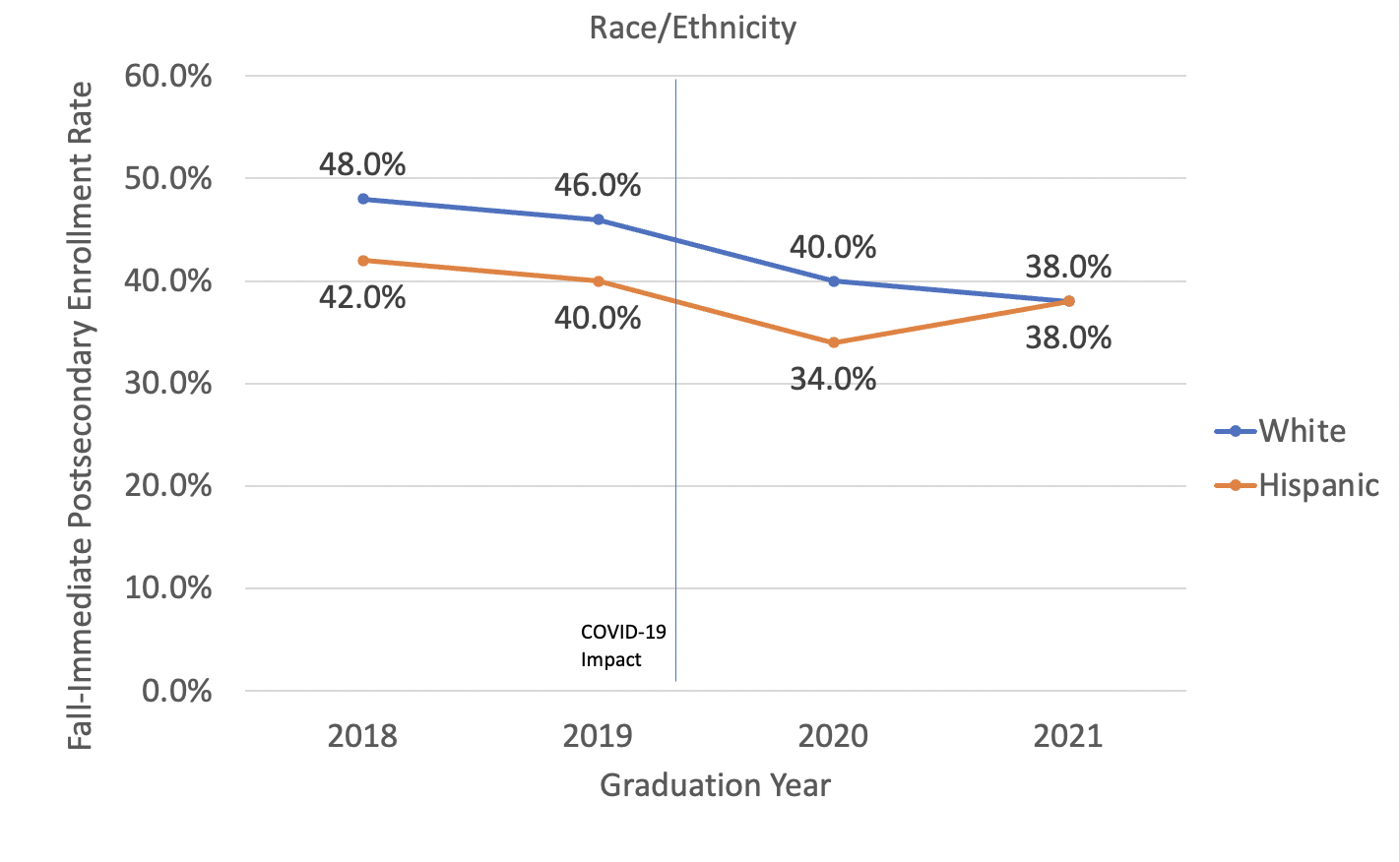The gender-, ethnicity- and income-based gaps between high school graduates who go to college and those who don’t are closing — but not necessarily in the direction the state had hoped.
Data from the State Board of Education for the 2020-21 school year shows that “go-on” rates for groups that typically see more college-bound graduates — white students, female students and students who are not eligible for free or reduced-price lunches (FRPL) — dropped at higher rates during the pandemic than demographics with lower go-on rates.
The State Board doesn’t yet have concrete data showing why the numbers dropped, but COVID-19 closures at out-of-state universities, more students opting for gap years or heading straight into the workforce, and general uncertainty during the pandemic could factor in.
Here’s what the go-on rates show, by demographic.
- Only 45% of female students headed to college in the fall of 2021. Two years prior, that number was at 54%.
- But the go-on rate for male students only dropped 6 percentage points in the same two-year span, and grew by 1 percentage point from 2020 to 2021.

- Graduates who were not enrolled in FRPL — a federal program that provides free or reduced-price meals to lower-income students — saw a 12 percentage point drop from 2019 to 2021.
- FRPL-eligible students dropped 4 percentage points from 2019 to 2020, and stagnated in 2021.

- And the gap between white and Hispanic students’ go-on rates closed completely in 2021.
- While white students saw an 8 percentage point drop from 2019 to 2021. Hispanic students saw a 6 percentage point drop the first year, but 2021 graduates made up some ground. By the end of the 2021 school year, 38% of students from both demographics were college-bound, on par with the state average for the year.

The 2021 go-on rate — Idaho’s averaged measure of college-bound students — sat at 37%. Go-on rates account for students who headed to a two-year or four-year college or university the semester immediately after graduating (fall 2021). It accounts for some, but not all students who opt for other post-secondary plans, like career-technical or workforce training programs. Students who immediately enter the workforce are not included.
To account for students who go on religious missions, join the military or take gap years before eventually enrolling in college, the State Board also measures go-on rates three years after students graduate. These numbers are not yet available for 2021 graduates, but three-year go-on rates are typically significantly higher than fall-immediate rates.
Randy Schrader contributed to this report.
